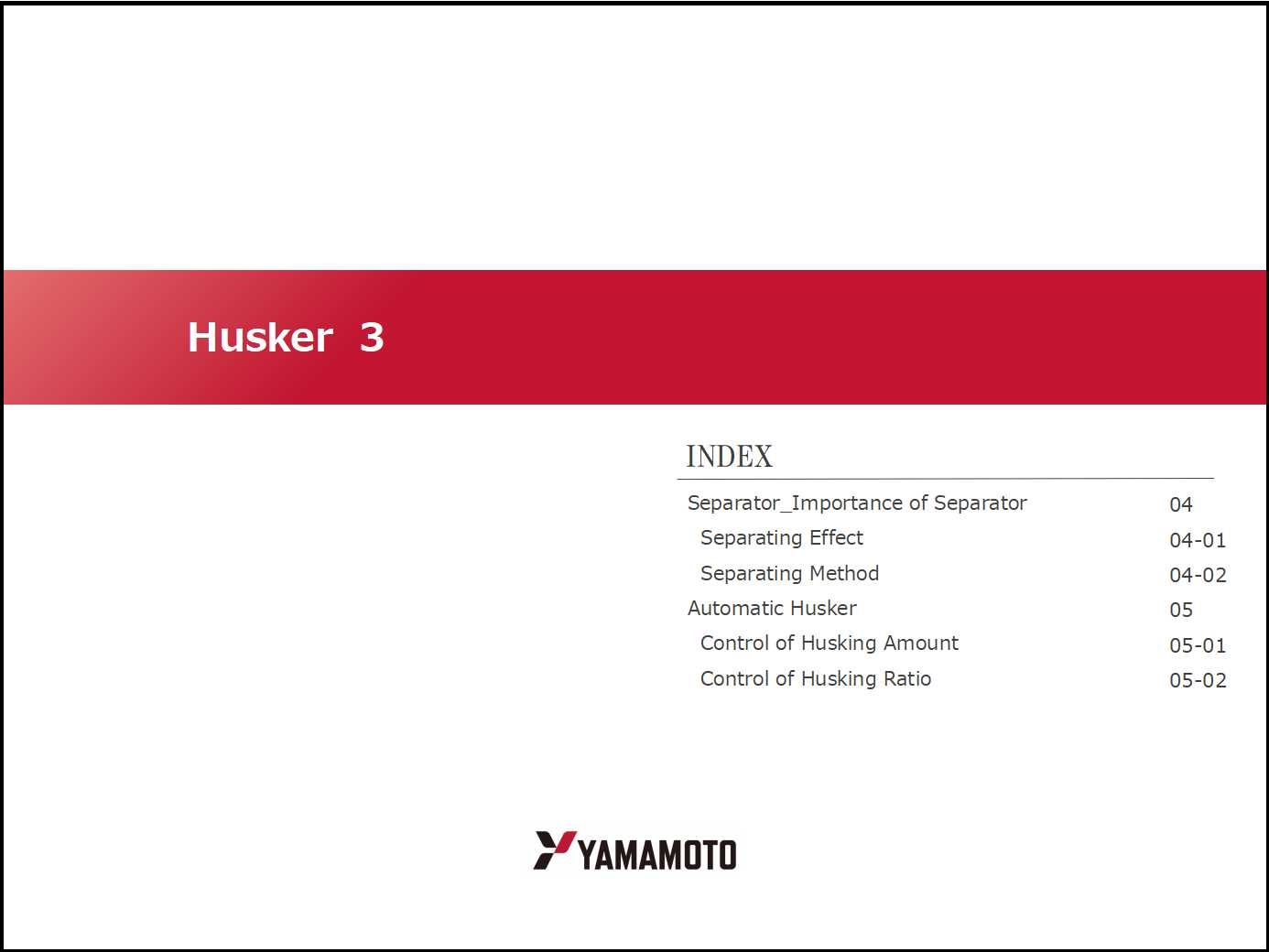40. Husker 3
- INDEX -
Separator_Importance of Separator
Separating Effect
Separating Method
Automatic Husker
Control of Husking Amount
Control of Husking Ratio
Separator_Importance of Separator
Separating paddy and brown rice after husking is sometimes performed in a section with a volume larger than the husking section. Thee name of separator frequently represents the husker itself.
The separator is as important as the husker. When the husking ratio is 100%, namely, complete husking is performed, a separator is not required. However, complete husking is not performed to produce high-quality brown rice. The efficiency of energy use is lower with complete husking.
At some rice mill in villages of developing countries, rubber roll husker are used without separator. This leads to considerable losses of energy, time and yield, as well as reducing the quality of products. A single pass of husking results in a husked ratio of about 80%. A double pass is thus required to achieve a husking ratio of 90%. At the same time, cracks, energy consumption of the husker, husking time, and wear of rolls are also almost doubled. As a result, cracks increase in milled rice, reducing yield, and also lowering quality.
In addition, to husk unhulled paddy, the polishing machine has to polish rice excessively. As a result, the energy consumption of the polisher increases and the milling yield of rice further decreases.
